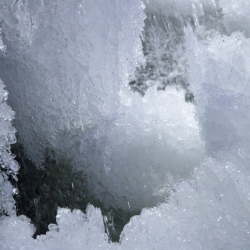
Yet another burst of bad news about Greenland, the vast northern ice sheet that contains 20 feet of potential sea level rise. The ice sheet is “darkening,” or losing its ability to reflect both visible and invisible radiation, as it melts more and more, the research finds. That means it’s absorbing more energy, which drives further melting.
“I call it melting cannibalism. You have melting feeding on itself,” says Marco Tedesco, the lead author of the study and a researcher with Columbia University’s Lamont Doherty Earth Observatory. The research was published in The Cryosphere by Tedesco and five other authors from U.S. and Belgian universities.
Scientists have long feared that when it comes to the Greenland ice sheet’s melt, there are a number of so-called “positive feedbacks,” or self-amplifying processes, that could make it worse. For instance, one of the best known of these involves simple elevation, a crucial feature for an ice sheet that is well over a mile high into the atmosphere in places.
If the ice sheet melts, it also slumps and becomes lower in the atmosphere. But air temperatures are warmer lower in the atmosphere. So the ice sheet melts more. And so on, and so on. In the new study, however, researchers examined a different so-called feedback, this one involving a property called the ice sheet’s “albedo,” or simply its overall reflectivity.
Bright white snow, falling atop the ice sheet, reflects light away, preventing it from being absorbed and thus blocking its heat energy from melting ice. However, there are many different hues and properties of ice and snow (and water), not all of which are equally reflective of either visible or non-visible radiation. (The “darkening” in question here refers both to changes that we can all see with our eyes, and also important changes that we can’t see).
For instance, melting and refreezing increases the grain size of particles of snow or ice, and near-infrared radiation then has a tougher time bouncing away, as opposed to being absorbed. Similarly, pools of standing water on the ice sheet surface also absorb more solar radiation, and warm up. And once melting gets through snow layers and into what researchers call “bare ice,” that too is darker than snow. “This bare ice is very dark, it melts much faster,” says Tedesco.
